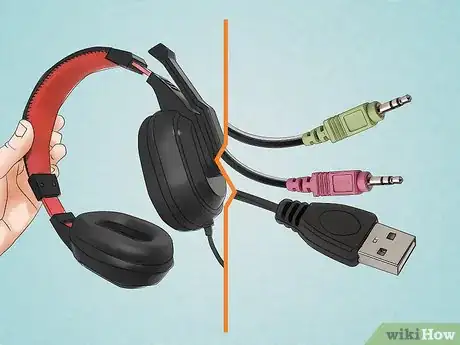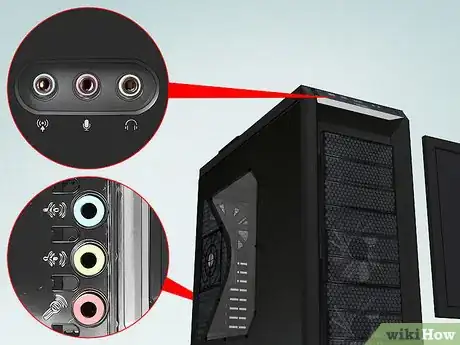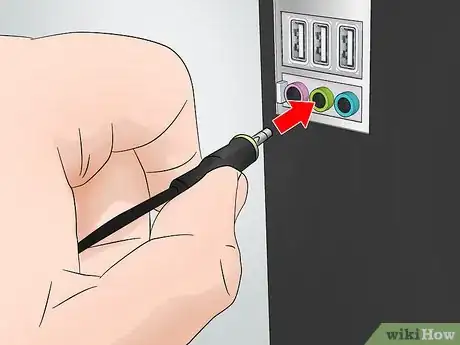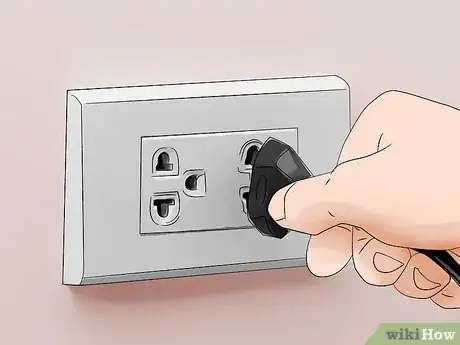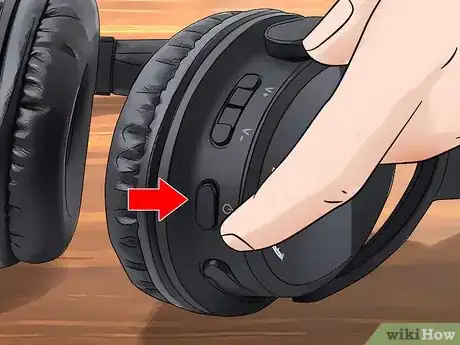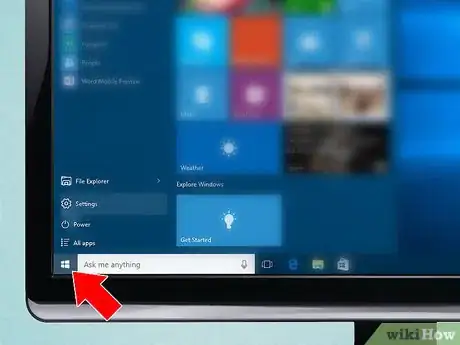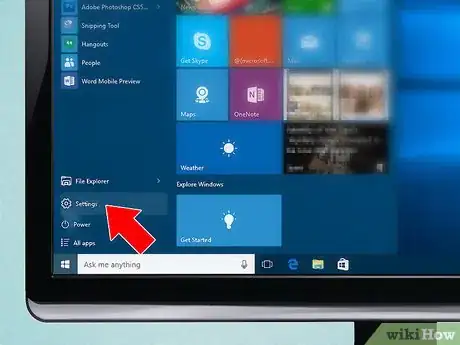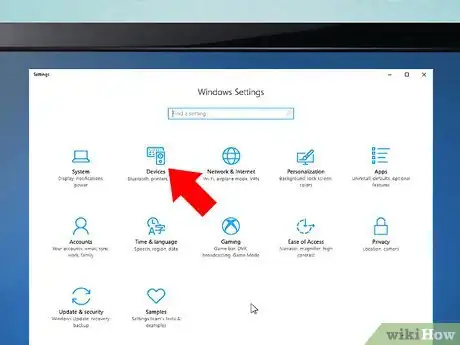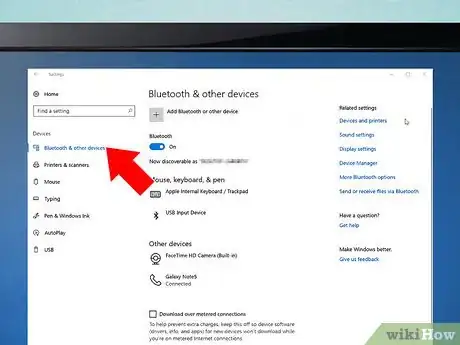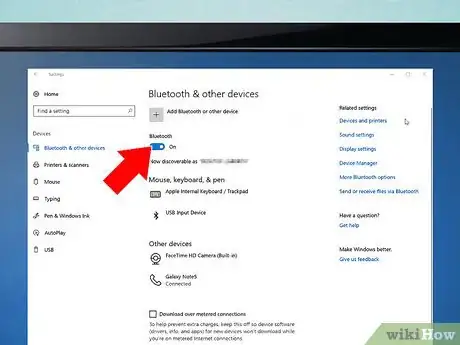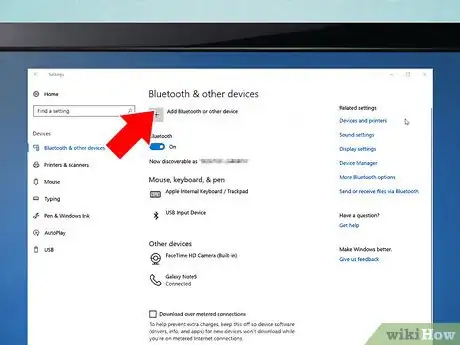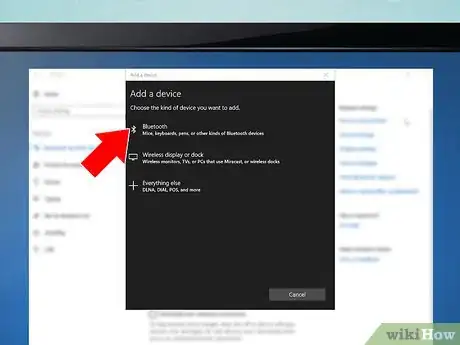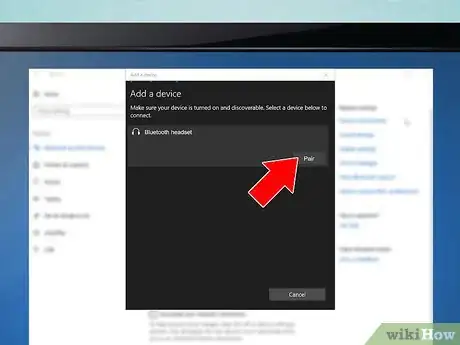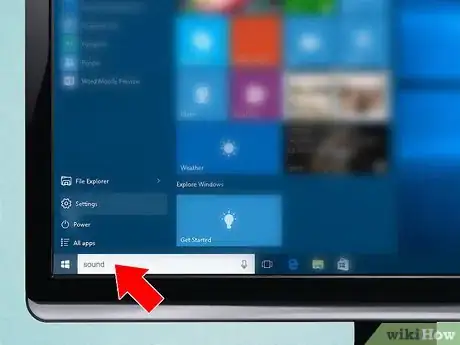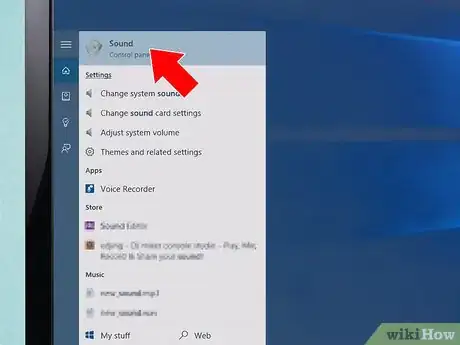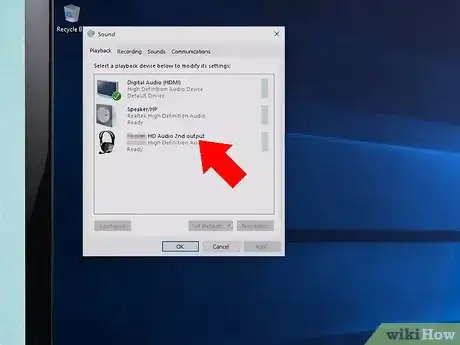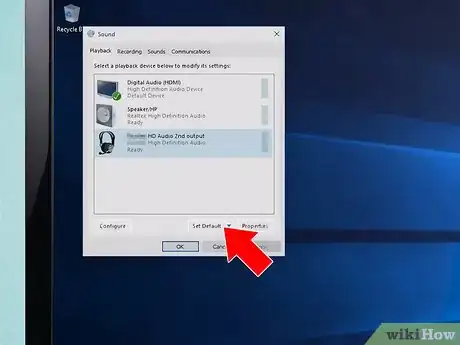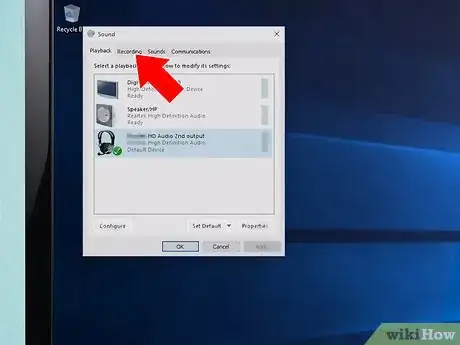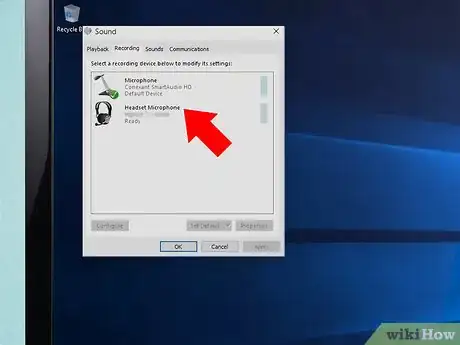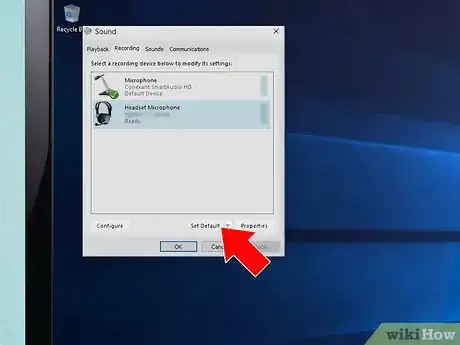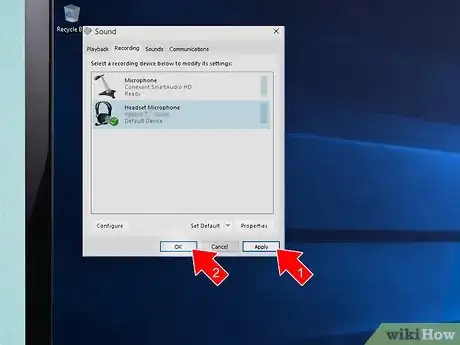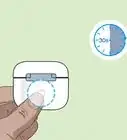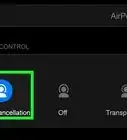X
This article was co-authored by wikiHow staff writer, Jack Lloyd. Jack Lloyd is a Technology Writer and Editor for wikiHow. He has over two years of experience writing and editing technology-related articles. He is technology enthusiast and an English teacher.
The wikiHow Tech Team also followed the article's instructions and verified that they work.
This article has been viewed 549,942 times.
Learn more...
This wikiHow teaches you how to connect a wired or Bluetooth headset to your computer and use it for both audio output and input. Headsets are often used for gaming or other online communication.
Steps
Part 1
Part 1 of 3:
Using Wires
-
1Check your headset's connections. Depending on the type of headset you have, you will see one or more of the following wires:
- 3.5 mm audio out - This is the standard audio-out plug-in that you see on headphones and speaker systems. 3.5 mm connectors plug into headphone ports, and are usually green in color. Typically, 3.5 mm audio-out ports also support audio-in (e.g., microphones).
- 3.5 mm microphone - Some headsets have a separate 3.5 mm jack for audio input as well. These are usually pink.
- USB - USB connectors are flat and rectangular. These plug into USB ports on your computer.
-
2Locate your computer's audio inputs. Laptop PCs typically have the 3.5 mm audio-out port on the left, right, or front side of the housing, while desktop PCs may have these ports on the front or back of the CPU box. Microphone ports are usually pink, while headphone ports are usually green.
- On laptops that don't have color-coded ports, the audio-in port will have an image of headphones next to it and the microphone input will have an image of a microphone next to it.
- USB port locations vary from computer to computer, but you'll normally find them near the audio ports.
Advertisement -
3Plug your headset into your computer. Plug the headset's cables into the appropriate locations on your computer.
-
4Plug your headset into a power source if necessary. Some headsets require external power sources, though most will be powered via USB if this is the case. If you need to attach your headset to an external power source (e.g., a wall socket), do so. Once this is done, your headset is ready to be set up in Windows settings.
Advertisement
Part 2
Part 2 of 3:
Using Bluetooth
-
1Turn on your headset. Press the headset's power button to turn it on. If the headset isn't fully charged, you might also want to connect it to its charger to ensure that it stays on during the connection process.
-
2Open your computer's Start . Click the Windows logo in the bottom-left corner of the screen. The Start window will appear.
-
3
-
4Click Devices. It's a computer monitor-shaped icon in the middle of the Settings page.
-
5Click Bluetooth & other devices. This tab is in the upper-left side of the Devices page.
-
6Click the Bluetooth switch if Bluetooth isn't on. It's below the "Bluetooth" heading near the top of the page. Doing so will switch Bluetooth to On.
- If the Bluetooth switch is blue (or your computer's default color), Bluetooth is already on.
-
7Click Add Bluetooth or other device. It's at the top of the page. Doing so opens the Bluetooth menu.
-
8Click Bluetooth. You'll find this at the top of the Bluetooth menu.
-
9Press your headset's pairing button. This button's location will vary depending on your headset model. Most pairing buttons have a Bluetooth icon next to them or on them.
- Consult your headset's manual if you can't find the pairing button.
-
10Click your headset's name. It should appear in the Bluetooth menu within a few seconds. The headset's name will likely be a combination of the manufacturer's name and the headset's model number.
- If the headset doesn't appear in the Bluetooth menu, turn the Bluetooth off, press the pairing button on your headset, and then turn Bluetooth back on.
-
11Click Pair. It's below the headset's name. Clicking this should prompt your headset to connect to your computer at this point. After this is done, your headset is ready to be set up in Windows settings.
Advertisement
Part 3
Part 3 of 3:
Changing Windows Sound Settings
-
1
-
2Type sound into Start. Doing so will search your computer for the Sound settings app.
-
3Click Sound. It's a speaker-shaped icon at the top of the Start window.
-
4Click your headset's name. You'll find it in the middle of the window.
-
5Click Set Default. It's in the lower-right side of the window. Doing so sets your headset as the default sound output item to use when it is connected.
-
6Click the Recording tab. This is at the top of the Sound window.
-
7Click your headset's name. It's in the middle of the window.
-
8Click Set Default. This sets your headset as the default sound input item (e.g., microphone) when it is connected to your PC.
-
9Click Apply, then click OK. Doing so saves your settings. You're now ready to begin using your headset with your computer.
Advertisement
Community Q&A
-
QuestionWhat if I don't have a microphone jack on my laptop/desktop?
 Community AnswerBuy a USB headphone adapter. You can get one on Amazon and they're inexpensive.
Community AnswerBuy a USB headphone adapter. You can get one on Amazon and they're inexpensive. -
QuestionWhat do you mean by TRRS?
 Community AnswerTRS is the jack with the three connections, "Tip, Ring and Sleeve", typical for stereo headphone connectors. TRRS has four connections, "Tip, Ring, Ring and Sleeve".
Community AnswerTRS is the jack with the three connections, "Tip, Ring and Sleeve", typical for stereo headphone connectors. TRRS has four connections, "Tip, Ring, Ring and Sleeve". -
QuestionHow do I set up my headset with a microphone attached to my Windows 10?
 Community AnswerThere are multiple ways of doing this, depending on the type of headphones you have. If you have USB headphones, simply plug them into an open USB port on your computer. You may need to install driver software from your manufacturer, which can be found on their website or included in the box on a USB drive or a CD. If you have headphones with a 3.5mm jack, plug them into the headphone port on your computer. If your computer's jack doesn't have TRRS (which allows a separate microphone connection, which is what you need for a headset), you may need to buy external hardware.
Community AnswerThere are multiple ways of doing this, depending on the type of headphones you have. If you have USB headphones, simply plug them into an open USB port on your computer. You may need to install driver software from your manufacturer, which can be found on their website or included in the box on a USB drive or a CD. If you have headphones with a 3.5mm jack, plug them into the headphone port on your computer. If your computer's jack doesn't have TRRS (which allows a separate microphone connection, which is what you need for a headset), you may need to buy external hardware.
Advertisement
Warnings
- Some headsets may have an extra cable or need an installation CD in order to work. For best results, always consult your headset's manual before attempting to connect it to your computer.⧼thumbs_response⧽
Advertisement
About This Article
Advertisement
